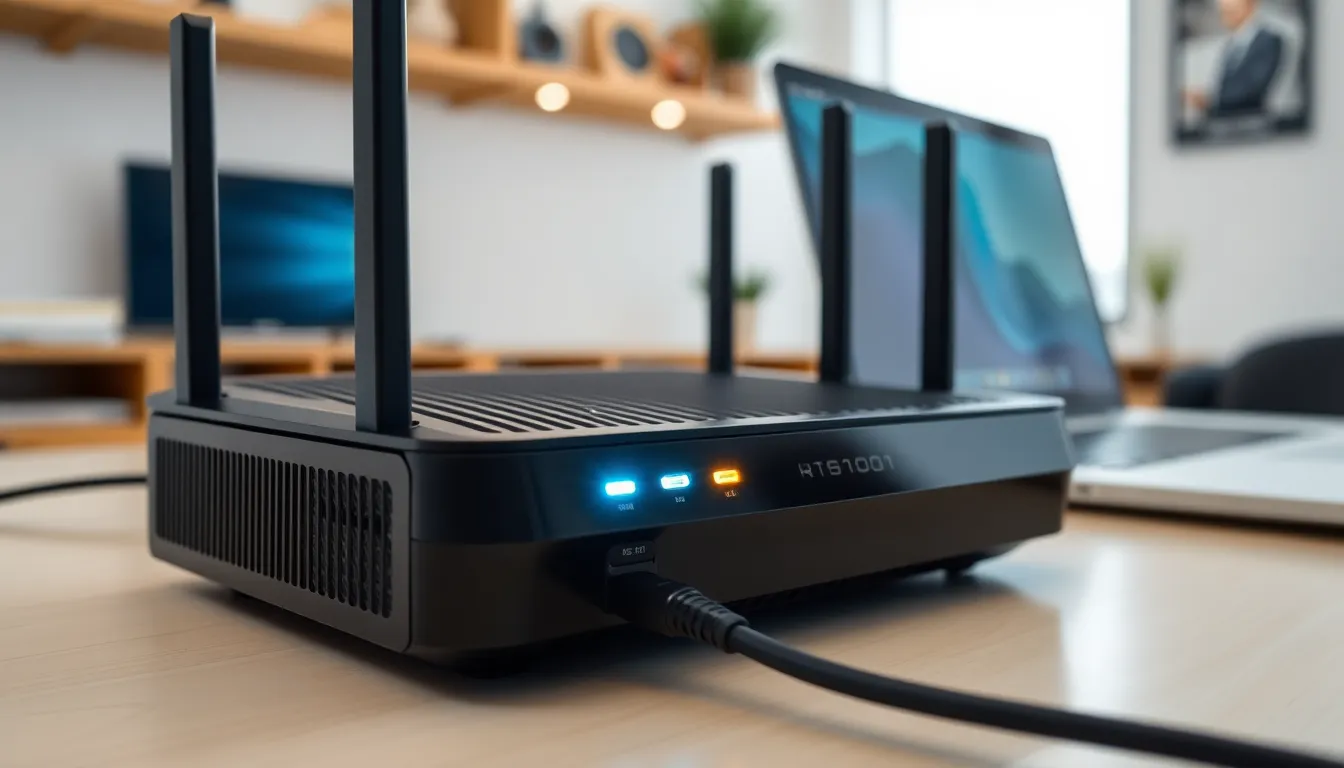In the vast universe of IP addresses, 192.168.1.18090 stands out like a quirky character at a tech party. While most people are familiar with the usual suspects, this little number has its own unique charm and purpose. It’s not just a random string of digits; it’s a gateway to understanding how devices communicate on a network.
Table of Contents
ToggleOverview of 192.168.1.18090
The IP address 192.168.1.18090 represents a unique identifier within a local network. Designed for private network use, it’s primarily allocated for use in home and office environments. Network devices communicate effectively using this address, promoting seamless data exchange among them.
Understanding the structure of this address is crucial. It comprises a sequence of numbers divided into four octets, with the first three segments suggesting a private Class C network. The fourth segment identifies specific devices within that network. Multiple devices can connect to the same private network, yet 192.168.1.18090 uniquely distinguishes one from the others.
Security implications exist with private IP addresses like 192.168.1.18090. Each device utilizing this address does not interact directly with the internet, offering a layer of protection against external threats. However, network administrators may require specific configurations to optimize routing and enhance network efficiency.
Troubleshooting network issues often involves recognizing this IP address. When connectivity problems arise, identifying devices using 192.168.1.18090 aids in pinpointing faults within the network. This process demonstrates the importance of comprehensive documentation and management of devices within the system.
Some routers may require adjustments to utilize addresses like 192.168.1.18090. Users often access the router’s settings through a standard web interface by entering a simpler address (like 192.168.1.1). Doing so enables configuration changes, allowing for personalization of network settings and security measures.
The significance of 192.168.1.18090 within local networks is profound, as it directly impacts device communication, security, and overall network management.
Features and Benefits
The IP address 192.168.1.18090 offers distinct features that enhance its utility within network environments.
Enhanced Security Protocols
Devices using 192.168.1.18090 benefit from enhanced security protocols. Private IP addresses like this one do not connect directly to the internet, minimizing exposure to external threats. Network administrators often implement firewalls and intrusion detection systems to bolster protection. Custom security configurations can further secure communications. Regular updates to security settings ensure ongoing protection against vulnerabilities. By utilizing VPNs, users can add another layer of encryption, safeguarding data integrity. These measures collectively create a robust defense, reducing the risk of unauthorized access.
User-Friendly Interface
The user-friendly interface facilitates easy management of network settings associated with 192.168.1.18090. Accessing the router settings is straightforward through standard web browsers. Each router typically provides a dedicated IP address for this purpose. Users can seamlessly navigate menus to configure various aspects of the network, from device management to security settings. Visual aids and intuitive layouts improve the overall experience. Clear instructions and tooltips guide users in making necessary adjustments. This simplicity empowers users with limited technical expertise to manage their networks effectively.
Setting Up 192.168.1.18090
Setting up the IP address 192.168.1.18090 involves several critical steps to ensure optimal functionality within a network.
Installation Process
Begin by connecting the device directly to the router using an Ethernet cable. This setup establishes a reliable connection for installation. Next, power on the device and ensure that network lights indicate connectivity. Access the router’s web interface through a browser. This interface typically requires entering the router’s IP address. Locate the section for device management, then add 192.168.1.18090 as a new device within the IP address settings. Save the changes to complete the installation.
Configuration Steps
Access the router settings panel after installation is complete. This step allows users to configure various parameters for 192.168.1.18090. Navigate to the network settings tab, and input necessary details such as subnet mask and gateway. Assign a static IP if needed for consistent accessibility. Adjust security settings to enhance protection against unauthorized access. This includes changing default passwords and enabling encryption protocols. Finally, reboot the router to apply all changes effectively, ensuring optimal performance of the device.
Troubleshooting Common Issues
Network issues may arise when using the IP address 192.168.1.18090. Identifying problems promptly optimizes device performance and enhances user experience.
Connectivity Problems
Connectivity issues often stem from incorrect configurations or hardware malfunctions. Users should check if the device is properly connected to the router. Verifying Ethernet cables or Wi-Fi connections resolves many common problems. Rebooting the router sometimes fixes connectivity glitches. If the device cannot obtain an IP address, ensure DHCP is enabled on the router. Configuration errors may also block the device from communicating within the network. Additionally, confirming that the subnet mask matches the network settings is essential for smooth operation.
Access and Permissions
Permission-related obstacles can prevent access to 192.168.1.18090. Users typically face challenges if they lack the correct access credentials. Often, default usernames and passwords are required during initial setup. Changing these credentials enhances security but might complicate future access if forgotten. Ensuring the device’s firmware is up to date facilitates smoother access. Lack of permissions can also occur when network settings restrict access to certain IP addresses. Reviewing router security settings helps resolve these limitations effectively.
Understanding the role of 192.168.1.18090 is essential for effective network management. This unique IP address not only facilitates communication among devices but also enhances security within private networks. By properly configuring and troubleshooting this address, users can ensure their networks operate smoothly and securely.
Regular updates and adjustments to settings are crucial in maintaining optimal performance. With the right approach, even those with limited technical knowledge can navigate the complexities of network management. Embracing the features of 192.168.1.18090 empowers users to create a robust and secure networking environment.



